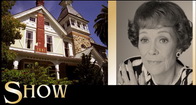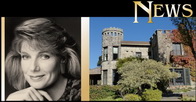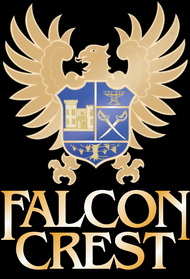





|
DFCF STANDARDS & PRACTICES FOR
Contradictory information in earlier script drafts is usually ignored because they only give evidence of a previous status in the production process, but might be helpful to gather information about the development of the show. Unless they are contradictory, however, they might also be useful to find answers whenever something in the final version of an episode itself appears to be incomplete, arbitrary, illogical, or otherwise confusing. 1.2. Dealing with Unreliable Information Unless confirmed, the DFCF does not rely on rumors or other unreliable information provided by anonymous contributors or stated on websites using obscure or anonymous sources, such as fan sites and web encyclopedia, including Wikipedia and the Internet Movie Database, etc., because they all have not demonstrated a rigorous standard of fact-checking up to now. Whenever the DFCF board quotes an obscure source, it is referenced as such or the citation is marked as a rumor, etc. 2. Plot, Historic Information and Interpretation The foregoing rules concerning the use of sources are also applicable as far as plot, historic information, such as the backstory of active and off-screen characters, and interpretation are concerned. The interpretation work done by the DFCF does not only refer to a single (isolated) episode, but the series as a whole. The following rules give an overview of how information from the above sources is gathered and what it is used for. 2.1. Academic Basis for Interpretation This website uses the sources described above for interpretation on the following academic basis (in roughly descending order):
2.2. Derived Content As with all fiction, the characters, entities, events and other aspects of the series are not always fully explained or defined. Due to this, the DFCF board adds intriguing interpretation and explanation into an article's content, primarily in the Behind the Scenes section, provided that the addition is based on the academic grounds listed above. The entries in the Behind the Scenes articles usually give an overview of the line of reasoning for the choices the DFCF board made for the explanation presented in that section; they also cite the episode numbers or other sources to make it as transparent as possible where the information comes from. This practice is referred to as derived content. As far as this practice is concerned, the following tools are applied to fulfill the goal of assembling the known parts from what the creator of the show and the writers have given with as little speculation as possible:
An example is one aspect in the Agretti family history: the number of brothers of Carlo and Frank Agretti. Although never mentioned explicitly on the show, it can be concluded that there must have been five Agretti brothers in that generation. Carlo and Frank are known from their on-screen appearances on the show. Augustino Agretti, another brother, was introduced as a dead off-screen character in historic information given by Carlo in # 020. In # 091, a reference about Robin's father, Philip Agretti, another off-screen character, was made; the same episode established Robin as her parents' only child. When Chris Agretti was introduced as Frank's nephew in # 211, it became obvious (i.e.: logical deduction) that he must be the son of a fifth Agretti brother because none of Frank's other three brothers had a son. The logical deduction concerning the fifth brother, as another off-screen character, is the only possible conclusion in that context. 3. Specific Phenomena Besides the "usual" errors and inconsistencies in lengthy productions involving a large number of rotating producers and writers, such as "Falcon Crest", there are some specific phenomena, which have to be taken into particularly careful consideration in the interpretation work. 3.1. Data A specific problem with the plot and historic information about character backstory is gathering data from the show, such as the point of time of certain events, a character's date of birth or death (primarily the years) and the time frame of an episode or season, etc.
Each season usually depicts the year of the original broadcast with minor adjustments, i.e. some episodes may depict a slightly earlier or later period of time than the time of their original airing. Whenever there is a reference to a certain day, week or month or even a real-life event, the calendar of that particular year can help identify the exact point of time depicted in the show. The real-life calendar, in combination with other sources, can also be helpful to determine the exact day or night within a month, e.g. when a scene is established at full moon. In case none of the usual sources gives a clue about a character's age, the actor's or actress' real-life year of birth is considered to be the only logical conclusion to determine the character's age. If the year determined by the method of real-life comparison fails because it would lead to a conflict with other established facts in the plot, the year closest to the one determined by the real-life comparison is considered to be the most plausible speculation. On "Falcon Crest", this was the case with Michael Channing, for example, whose second birthday was celebrated in # 161 although, from the time that had passed, it was obvious it must actually have been his first birthday. The DFCF decided to ignore such wrong references to a child character's age for character bios, family trees and family bibles as they are a contradiction to the previously established time of birth. The phenomenon itself, however, is described in the Behind the Scenes section. 3.2. Retroactive Continuity (Retcon) This phenomenon, commonly contracted to the portmanteau retcon, describes two different elements of storytelling:
Mere additions usually do not cause any conflicts with existing storylines unless there are contradictions or inconsistencies the writing and producing staff overlooked. This is the reason why this aspect of retconning is often completely ignored or simply referred to as a "later addition" rather than a typical retcon. An example is the cooperation between Richard Channing and Pilar Ortega, which season 8 established as having happened somewhere in 1986. The most obvious retconning like that was done on "Falcon Crest" when the backstory of the relationship between the Giobertis and Agrettis, particularly Lance and Melissa, was changed. When Melissa was introduced in season 1, it seemed she and Lance met for the first time during Angela's dinner party in # 011 and that the Giobertis and Agrettis had not had much to do with each other before. Beginning in season 6, however, more and more backstory was added, creating a century-lasting Agretti - Gioberti feud with a number of historic (dead) off-screen characters and the "revelation" that Lance and Melissa had known each other since their childhood. Whereas it is common among fans to use so called "krypto-revisionism" to ignore a particular retcon, itself a form of meta-retcon stating that either the original story or the new development was never established on the show, the DFCF prides itself on using the foregoing instruments for interpretation and giving explanations for inconsistencies as stated in the Behind the Scenes section. 3.3. Fanon
Canon, in terms of a fictional setting or universe, is any material that is considered to be "genuine", or can be directly referenced to as material produced by the series creator and writers developing the show. Fanon is sometimes well known by creators and writers and may even be accepted as authentic (or at least as reasonable an explanation as any) to something they have not explicitly explained. Series creator EARL HAMNER's official biography, "EARL HAMNER: From Walton's Mountain to Tomorrow", written by JAMES E. PERSON in 2005, uses the term "Falcon Crest Victorian Mansion", a name for Angela's house devised by the DFCF, which is probably the most prominent example of fanon in the context of terminology (see chapter 4 for details). EARL HAMNER deliberately accepted that particular name for the building as quasi-official. On the other hand, some creators of serial works introduce facts in subsequent installments of their work to invalidate specific fanon. This, however, has not happened in any case on "Falcon Crest". 3.4. No Fanwankery With the foregoing rules, the DFCF distances itself from what is commonly known as "fanwankery", a somewhat derogatory term to describe an attempt by fans of a work of fiction to explain or justify plot holes or continuity errors, often through convoluted contrivances and self-generated ideas. Although the DFCF acknowledges that interacting with the fictional setting to devise ways to explain an error can be entertaining, the board of the fan club emphasizes that the foregoing rules are considered methods to minimize the risk of drifting away into fanwanking. The DFCF board is aware of the subtle differences between logical or plausible interpretation of observed concepts and events of the show on the one hand and generating ideas of what fans of the show might believe has happened on the other hand. The articles in the Behind the Scenes section offer a suggestion for interpretation based on the academic rules the DFCF prides itself on codifying for that purpose. 4. Terminology This website tries to be as specific as possible as far as characters' names, entities, topographical names and buildings are concerned. Information about such names, including the correct spelling, is gathered in accordance with the use of sources as described above. The following examples discuss a few particular problems in detail: 4.1. Character Names
According to the foregoing use of sources, the correct spelling — as used on this website — can be derived from props, e.g. letters and signs, featured on the show. Different spelling in the credits, as a subordinate component in the primary source, is usually considered as an error and, therefore, ignored. One example is the spelling of Jeff Wainwright: As primary sources, # 119 and 153 show the correct spelling "Jeffrey Wainwright" on the cover of his novel, "Consumed", and on his gravestone. "Wainright", as spelled in the credits, however, is contradictory and, therefore, considered as a misspelling. Also compare similar problems with the names Vicki(e) / Vicky, Phil(l)ip Eri(c)kson and Skylar / Skyler as discussed in the FAQ section on this website. 4.2. Entities The foregoing rules are also applicable as far as the names of entities, such as corporations and public institutions, etc., are concerned. Entities are often referred to by short forms or "nicknames" by the characters on the show, such as "the Tuscany hospital" rather than the official full name "Queen of the Valley Hospital – Tuscany Valley Medical Center" as seen on the sign at the entrance to the main building. Whenever necessary, especially to distinguish such an entity from another, this website prefers the official full name. 4.3. Topographical Names and Buildings In case places and buildings do not have a canonical name (for canon, see chapter 3.3), i.e. are not referred to by a specific name on the show, and the foregoing rules for the use of secondary or subordinate sources do not help find the name either, this website picks a name on the following basis:
A courthouse in Tuscany featured in # 210 — different from the "usual" Tuscany County Courthouse — is referred to as the Family & Probate Court, for example, because family law and probate law cases were dealt with here. The "usual" main building, on the contrary, is simply referred to as the Tuscany County Courthouse or — to distinguish it from other buildings of the same court — as the Historic Courthouse. Some names for places and buildings chosen by the DFCF from a fan based perspective even resulted in fanon as described above (see chapter 3.3). To come back to the example stated above, various characters called Angela Channing's house "the mansion", "the manor house", "the Channing residence" or — as a pars pro toto — simply "Falcon Crest", etc. In 1989, THOMAS J. PUCHER, who later joined the DFCF board of directors, decided to use a descriptive term rather than any of these unspecified names and to refer to the house as the "Falcon Crest Victorian Mansion", based on a real-life comparison because the filming location, Villa Miravalle, is often described as "Spring Mountain's Victorian Mansion". The DFCF board's decision to continue to use the term "Falcon Crest Victorian Mansion" in all its publications and its subsequent worldwide acceptance as the quasi-official name of the house led to the probably most prominent example for fanon in the "Falcon Crest" world. 5. Order of Notes in the "Behind the Scenes" Section As a basic rule, all information in that section is listed chronologically within each episode. Recurring filming locations are usually listed in the first episode to feature a specific location; unless other specifics or anomalies have to be discussed, locations are not relisted in each following episode that makes use of them. Issues concerning more than one episode and affecting later episodes in a different manner, e.g. the multiple use of the same prop for different purposes, are usually addressed only in the episode in which said issue becomes apparent. Exceptions of the above order can be made in single cases based on the subject matter. |




